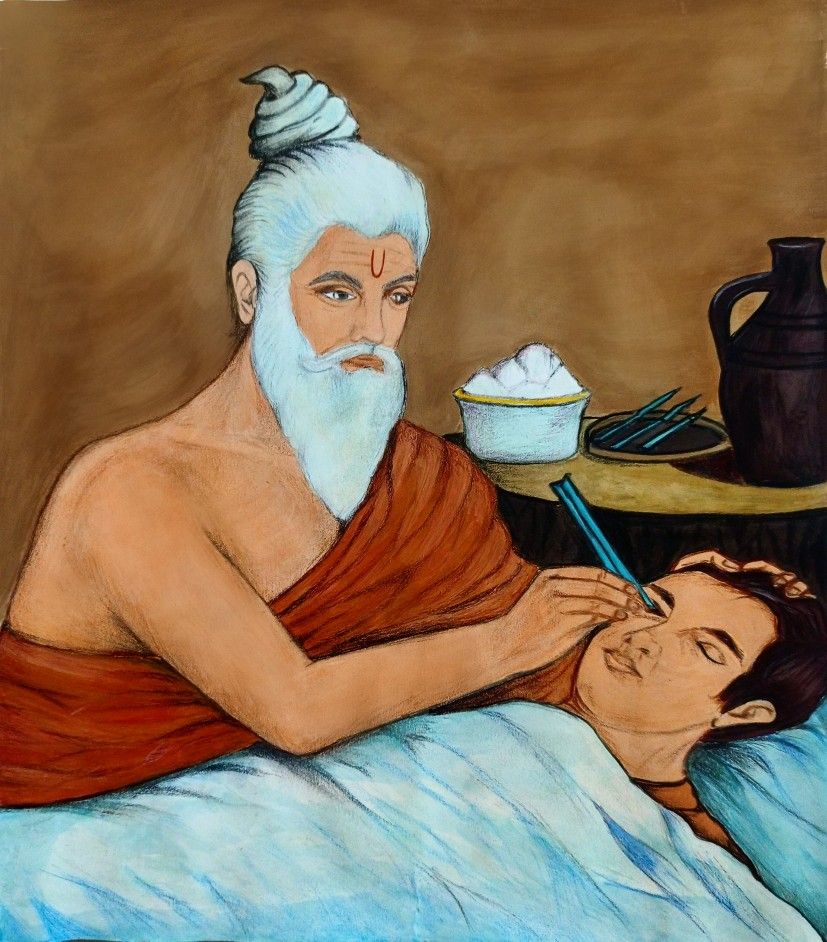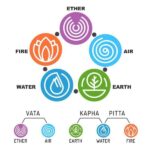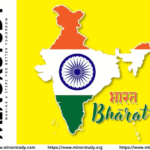“The Eternal Science of Healing: Truths About Ashtang Ayurveda That Will Transform Your Life”
Introduction: The Eternal Science of Healing
Ayurveda, the “Science of Life,” is one of the world’s oldest holistic healing systems. Among its profound branches, Ashtang Ayurveda stands out as a complete framework for health, wellness, and disease management. The term Ashtang means “eight limbs,” referring to eight specialized branches that collectively guide physical, mental, and spiritual well-being.
- Introduction: The Eternal Science of Healing
- 📜 History of Ashtang Ayurveda
- 🕰️ Timeline of Ashtang Ayurveda
- 🌸 The Eight Limbs of Ashtang Ayurveda
- 🌿 Interesting Facts About Ashtang Ayurveda
- 🌍 Significance of Ashtang Ayurveda in Modern Times
- 🌞 Wishing with Ayurveda Wisdom
- 🔎 FAQs About Ashtang Ayurveda
- 🌺 Daily Life Impact of Ashtang Ayurveda
- 📌 Observance and Importance in Society
- ⭐ Review Section – Public Opinions on Ashtang Ayurveda
- ✅ Important Points at a Glance
- 🌿 Conclusion: Why Ashtang Ayurveda Matters in Our Life
From ancient sages to modern health practitioners, Ashtang Ayurveda continues to inspire millions. This article explores its history, facts, timeline, significance, FAQs, daily life impacts, and a special review section so you can connect with Ayurveda in a truly human-friendly way.
📜 History of Ashtang Ayurveda
Vedic Origins: Ayurveda originated more than 5000 years ago in India. Its roots are found in the Atharvaveda, one of the four Vedas.
Sage Charaka & Sushruta: Charaka Samhita (medicine) and Sushruta Samhita (surgery) form the backbone of Ayurveda. Sushruta is often called the “Father of Surgery.”
Ashtang Hridayam: Acharya Vagbhata (6th century CE) compiled both Charaka and Sushruta’s works into the Ashtang Hridayam, the foundational text on Ashtang Ayurveda.
Timeless Wisdom: For centuries, Ayurveda was transmitted through oral tradition, palm-leaf manuscripts, and later structured medical schools across India.
🕰️ Timeline of Ashtang Ayurveda
5000 BCE: Ayurveda’s roots emerge in Vedic chants and rituals.
1500–1000 BCE: Atharvaveda mentions medicinal herbs.
600 BCE: Sushruta performs early surgical procedures.
200 CE: Compilation of Charaka Samhita.
600 CE: Vagbhata systematizes Ashtang Ayurveda in Ashtang Hridayam.
1000–1500 CE: Ayurveda spreads to Tibet, China, and Persia.
20th Century: Revival of Ayurveda through universities and research institutes.
21st Century: Integration of Ayurveda with modern medicine, recognized globally by WHO.
🌸 The Eight Limbs of Ashtang Ayurveda
Ashtang Ayurveda is divided into eight specialized branches, just like modern medical specializations:
Kaya Chikitsa (Internal Medicine): Treatment of fevers, digestive issues, and systemic disorders.
Shalya Tantra (Surgery): Surgical procedures including suturing and wound management.
Shalakya Tantra (ENT & Ophthalmology): Eye, ear, nose, and throat care.
Kaumarbhritya (Pediatrics): Childcare, fertility, and pregnancy support.
Agada Tantra (Toxicology): Treating poisoning from animals, plants, or chemicals.
Rasayana Tantra (Rejuvenation): Anti-aging therapies, immunity, and vitality boosters.
Vajikarana (Aphrodisiac Therapy): Reproductive health and sexual vitality.
Bhuta Vidya (Psychiatry & Spiritual Healing): Mental health and spiritual therapies.
🌿 Interesting Facts About Ashtang Ayurveda
Ayurveda is the only medical system that integrates body, mind, and spirit together.
Sushruta described over 300 surgical procedures and 120 surgical instruments.
Ayurveda introduced plastic surgery techniques long before modern medicine.
Rasayana therapies were early forms of anti-aging treatments.
Ayurveda classifies individuals into three doshas (Vata, Pitta, Kapha) – unique body constitutions guiding lifestyle and diet.
🌍 Significance of Ashtang Ayurveda in Modern Times
Preventive Health: Focuses on diet, daily routine (Dinacharya), and seasonal routine (Ritucharya).
Holistic Healing: Treats root causes, not just symptoms.
Mental Health: Incorporates meditation, yoga, and herbs for psychological balance.
Global Recognition: WHO acknowledges Ayurveda as a traditional medicine system.
Sustainability: Uses natural herbs, oils, and therapies—eco-friendly and safe.
🌞 Wishing with Ayurveda Wisdom
✨ May your life be filled with balance, wellness, and inner peace through the timeless wisdom of Ashtang Ayurveda. ✨
🔎 FAQs About Ashtang Ayurveda
Q1: What is the meaning of Ashtang Ayurveda?
It refers to the “Eight Limbs of Ayurveda,” covering different branches of health science.
Q2: Is Ashtang Ayurveda relevant today?
Yes, its preventive, holistic, and natural approach makes it more relevant than ever.
Q3: Does Ayurveda replace modern medicine?
No, it complements modern medicine and works best in integration.
Q4: Can Ayurveda treat chronic diseases?
Ayurveda has shown positive results in managing diabetes, arthritis, asthma, and lifestyle disorders.
Q5: What is Rasayana in Ayurveda?
It’s the science of rejuvenation that enhances immunity, longevity, and vitality.
🌺 Daily Life Impact of Ashtang Ayurveda
Helps plan diets according to your body type (Dosha).
Promotes regular detox (Panchakarma).
Improves sleep, digestion, and mental clarity.
Supports emotional stability and stress relief.
Encourages eco-friendly, sustainable living.
📌 Observance and Importance in Society
Cultural Significance: Ayurveda is not just medicine, but part of India’s cultural heritage.
Wellness Industry: Yoga, Ayurveda spas, and herbal products contribute billions globally.
Public Health: Plays a major role in preventive healthcare in rural and urban India.
Spiritual Balance: Encourages harmony between self and nature.
⭐ Review Section – Public Opinions on Ashtang Ayurveda
Patients’ Review: Many people report long-term relief from chronic conditions like arthritis and digestive issues.
Doctors’ Perspective: Ayurveda offers effective complementary therapies, especially for lifestyle disorders.
Global Wellness Experts: Ayurvedic diet and Panchakarma are seen as natural detox solutions.
Personal Reflection: Unlike quick fixes, Ayurveda emphasizes lifestyle balance—making it a “life companion” rather than just a medical system.
✅ Important Points at a Glance
Ashtang Ayurveda = Eight branches of healing.
Ancient yet modern – integrates preventive and curative care.
Promotes balance of Doshas (Vata, Pitta, Kapha).
Supports mental, physical, and spiritual well-being.
Globally recognized and increasingly researched.
🌿 Conclusion: Why Ashtang Ayurveda Matters in Our Life
Ashtang Ayurveda is not just medicine—it is a lifestyle philosophy that blends science, spirituality, and sustainability. Its eight branches cover everything from surgery to pediatrics, from toxicology to mental health. Unlike modern medicine, which often treats symptoms, Ayurveda treats the root causes while nurturing the soul.
In daily life, it teaches us mindful eating, balance in work and rest, and alignment with nature’s rhythms. For society, Ayurveda offers an eco-friendly, preventive healthcare system that reduces medical burdens and promotes harmony.
Final Thought
🌸 If modern life has left you imbalanced, Ashtang Ayurveda offers a timeless map to restore health, happiness, and inner peace. 🌸









Wohh just what I was searching for, regards for posting.